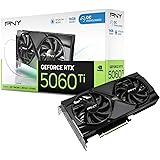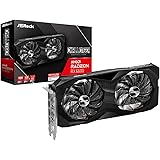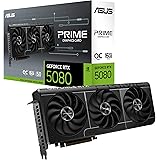The AMD Radeon HD 7870, released in 2012, was a mid-range graphics card based on the Graphics Core Next (GCN) architecture. The AMD Radeon HD 7870 boasts several impressive specifications that define its performance capabilities. It comes equipped with 2GB of GDDR5 memory. This type of memory is known for its high bandwidth, which allows for faster data transfer between the GPU and RAM, resulting in improved gaming performance and processing capabilities.

The memory clock of the HD 7870 stands at 1200 MHz, aiding the efficiency in data handling. The memory bandwidth peaks at 153. 6 GB/s, which is a crucial factor for delivering high-fidelity graphics and smooth gameplay experiences.
Further enhancing its performance are its 1024 stream processing units organized into 16 compute units. This configuration gives the GPU a solid backbone for handling rendering tasks, parallel computations, and streamlining performance across various applications. The single precision compute power of 1. 76 TFLOPS allows the HD 7870 to execute over a trillion floating-point operations per second, making it a contender for computational tasks beyond just gaming.
Mining Capabilities
The cryptocurrency mining landscape has changed significantly in recent years, with various coins requiring differing levels of computational power. The AMD Radeon HD 7870 has found its niche, especially with older coins or those that have not yet transitioned to demanding proof-of-stake systems.
For instance, the Lyra2REv2 algorithm, which is utilized by cryptocurrencies such as Verge (XVG), Vertcoin (VTC), and MonaCoin (MONA), records a mining hashrate of 7. 4 GH/s on the HD 7870. This level of performance can yield reasonable returns if the market conditions are favourable. Conversely, the hashrate for Decred (DCR) stands at 0. 63 GH/s, while Cryptonight, used by Monero (XMR) and DigitalNote (XDN), only achieves 0. 39 kH/s. The lower performance in these mining applications reflects the evolving nature of cryptocurrency algorithms and the escalating demands for modern mining hardware.
The HD 7870 also performs adequately in mining algorithms such as Equihash, achieving 145 Sol/s. This makes it potentially viable for gaining Zcash (ZEC), ZenCash (ZEN), and several other cryptocurrencies. However, difficulty levels and electrical costs must always be considered. For mining Lbry (LBC), the hashrate drops to 0. 04 GH/s, showcasing the varying efficiency across different cryptocurrencies.
Factors such as power consumption play a critical role in assessing the viability of the HD 7870 for mining. Consuming approximately 200 watts per hour, the card must be used in environments where electricity costs are not excessively high. For individual miners, especially casual ones, the ongoing electricity costs may outweigh the profits earned from mining since newer GPUs tend to provide better energy efficiency and performance.
Historical Context and Development
The AMD Radeon HD 7870 was introduced in 2012 as part of the Southern Islands architecture, which marked a significant shift in AMD’s graphics technology. At the time, it was recognized for providing strong performance in gaming at a mid-range price point, appealing to both gamers and budget-conscious consumers.
This model notably positioned AMD against NVIDIA’s offerings, such as the GTX 660, which were also in the market during this period. AMD’s strategy at the time emphasized competitive pricing while delivering superior performance per dollar for certain gaming experiences. The success of the HD 7870 helped to solidify AMD’s reputation as a contender in the graphics market.
AMD has deep historical roots in the development of computer hardware and graphics technology. The contributions by influential engineers and designers have shaped how GPUs are manufactured and how they perform. Over the years, the company has transitioned through various architecture improvements, which have culminated in modern GPU designs that integrate advanced technologies, enhancing efficiency, and performance.
Performance and Relevance Today
As cryptocurrency mining became a more lucrative venture around 2017, older models like the HD 7870 gained renewed interest. Miners sought out affordable options to enter this income stream, leading to increased demand even for older hardware. However, the HD 7870 struggles to keep pace with the high-performance GPUs currently dominating the market.
When considering whether to mine with an HD 7870, individuals should evaluate their existing hardware. If one already owns this model, it might be worthwhile to experiment with minor altcoins still compatible with the HD 7870. However, for newcomers looking to purchase, the recommendation is to seek this card at a substantially lower price point. Given its age, memory limitations, and electricity requirements, it should ideally be acquired under circumstances that reach satisfactory thresholds for profitability.
The discussion around the AMD Radeon HD 7870 cannot ignore the advancements in GPU technology leading to improved models. Modern graphics cards offer significantly enhanced power efficiency and advanced capabilities that provide a stark performance contrast compared to older cards. These advancements render older models like the HD 7870 relatively obsolete in mining high-demand cryptocurrencies.
Perspectives on Future Developments
Expectations for the future suggest that the demand for cryptocurrency mining capabilities will continue to influence GPU manufacturing and innovation. As this demand swells, new mining algorithms will emerge, some aiming to reduce energy consumption while maintaining efficiency. Models that can balance performance and efficiency will likely dominate the market, pushing older models further towards obsolescence.
AMD continues to innovate with newer architectures to meet these changing demands. Future graphics cards will likely incorporate features that maximize power efficiency, reducing the overall carbon footprint of mining operations. Additionally, improvements in cooling technologies and heat dissipation will further enhance their viability for prolonged mining periods.
Moreover, the ongoing evolution of software and mining techniques should not be overlooked. As new algorithms are adopted, older hardware’s relevance may shift, leading to further diminishing returns on older models like the HD 7870. Miners will have to consistently evaluate the productivity of their investments in hardware while considering the changing landscape of cryptocurrencies.
One must also consider the regulatory implications surrounding cryptocurrencies. Governments are beginning to pay closer attention to mining activities due to the substantial energy usage and potential for market manipulation. These regulations may limit where and how mining occurs, impacting the utility of older cards like the HD 7870 in certain regions or countries.
The AMD Radeon HD 7870 serves as a microcosm of the ongoing changes within the GPU industry and cryptocurrency mining. While its specifications provided a strong proposition at launch, the evolving landscape has presented challenges that render it less favorable relative to modern alternatives. Miners and gamers alike need to weigh the advantages and limitations of utilizing such older hardware against current technological trends.
Future considerations in both mining and gaming underscore the need for continuous adaptation in technology use and investment strategies. As hardware improves and new algorithms emerge, individuals holding onto older models like the HD 7870 should remain vigilant, assessing whether to continue utilizing or if it is time for an upgrade. Overall, the AMD Radeon HD 7870 stands as a testament to the rapid evolution of technology, where today’s cutting-edge solution can quickly become yesterday’s legacy.
AMD Radeon HD 7870 specifications :
- Memory size : 2GB GDDR5
- Memory Clock : 1200 MHz
- Memory Bandwidth : 153.6 GB/s
- Streem Processing Units : 1024 ( 16 compute units )
- Single Precision Compute Power : 1.76 TFLOPS

AMD Radeon HD 7870 Mining Hashrate :
- Lyra2REv2 [ (XVG) & (VTC) & (MONA) ] Mining Hashrate : 7.4 GH/s
- Decred (DCR) Mining Hashrate : 0.63 GH/s
- Cryptonight [ (XMR) & (XDN) ] Mining Hashrate : 0.39 kH/s
- Lbry ( LBC ) Mining Hashrate : 0.04 GH/s
- Equihash [ (ZEC – ZEN – ZCL) & (BTG) & (KMD) & (HUSH) ] Mining Hashrate : 145 Sol/s
- Pascal [ (PASC) & (PASL) ] Mining Hashrate : 0.35 GH/s
- X11GOST [ Sibcoin (SIB) ] Mining Hashrate : 1.4 GH/s
Power Consumption : 200 Watt/Per Hour.




